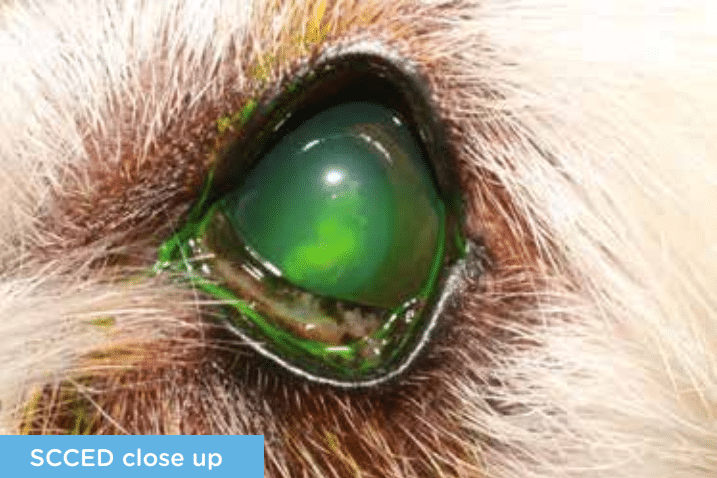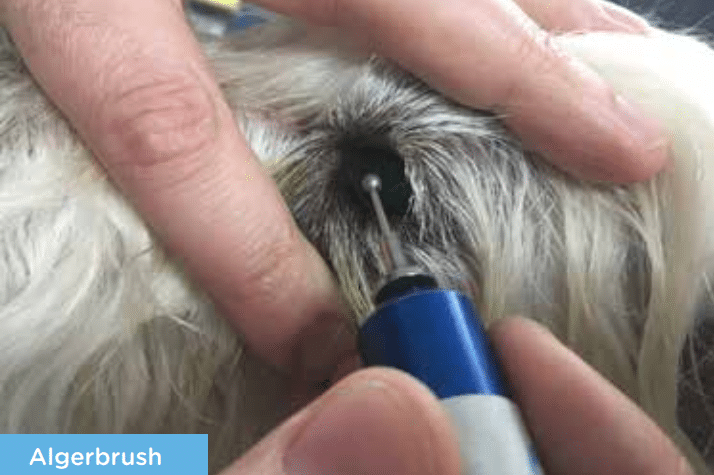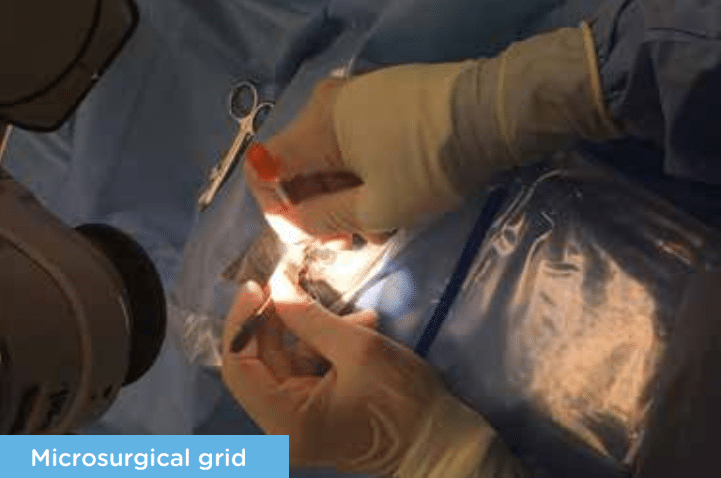SCCED – Spontaneous Chronic Corneal Epithelial Defect/Indolent ulcer/Recurrent corneal ulceration

What is an indolent ulcer?
An indolent ulcer is a superficial non-infected erosion of the surface of the eye (cornea), which may occur spontaneously. The characteristic features are loose edges of the ulcer and poor response to standard medical treatment in a dog in a dog which is usually 6-8 years or older.
Why does it occur?
The exact mechanism behind the development of indolent ulcers has not been determined in dogs. There is a similar condition in humans, in which the connection between the superficial layer of the cornea and the underlying layers gradually becomes weaker with age, resulting in loose attachment between the different layers. This has not been proven in dogs, however a similar mechanism seems plausible.


Can both eyes be affected?
Yes, both eyes can be affected either simultaneously or consecutively and recurrences are likely.
Are any breeds predisposed?
Any breed can be affected, however some breeds are more prone to this condition, including Boxers, West Highland White Terriers, Staffordshire Bull Terriers, etc.
What treatment options are available?
There are several treatment options available each with their advantages and disadvantages. All treatment options involve removing the loose edges of the superficial layer of the cornea and ‘debriding’ (rubbing off) the underlying layers to provide an adequate surface for new superficial cells to attach to. This may involve debriding the cornea with a so-called ‘diamond burr’, or having to perform surgery using microsurgical instruments at high magnification.
What happens if I do nothing?
If left untreated, indolent ulcers won’t heal and secondary complications, such as infection may follow. This may cause permanent loss of vision or in the worst case, the eye.
